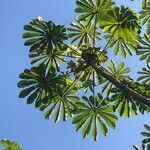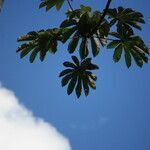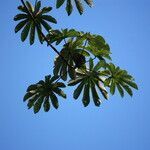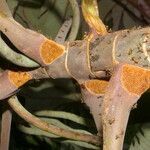narrowly oblongoid-fusiform and frequently somewhat falcate, sparsely arachnoid-villosulose to glabrate, the common peduncle 8-14 cm. long, nearly glabrous.
A tall tree. The leaves have 10 or more long lobes. The fruit spikes can be 50 cm long.




